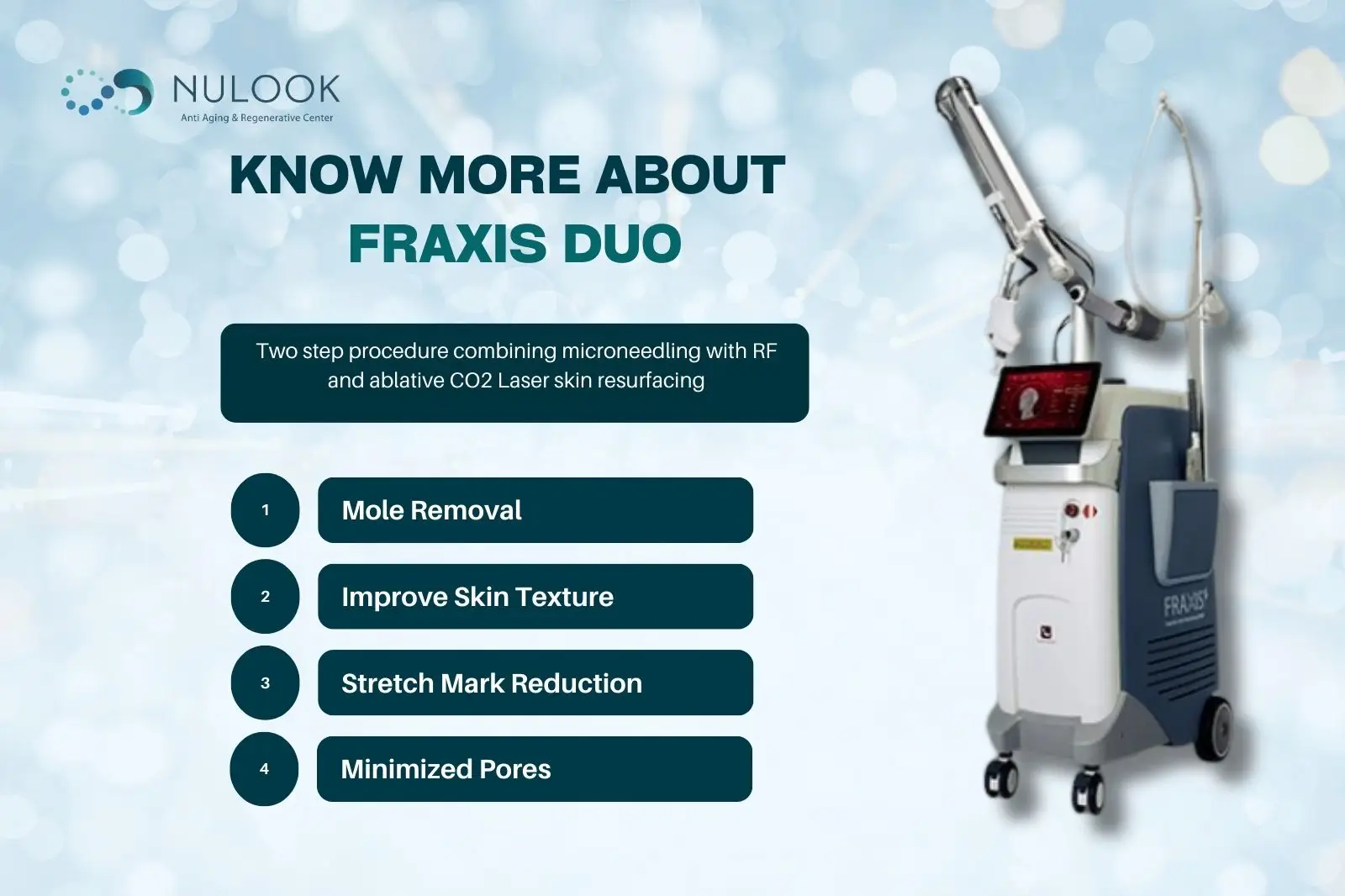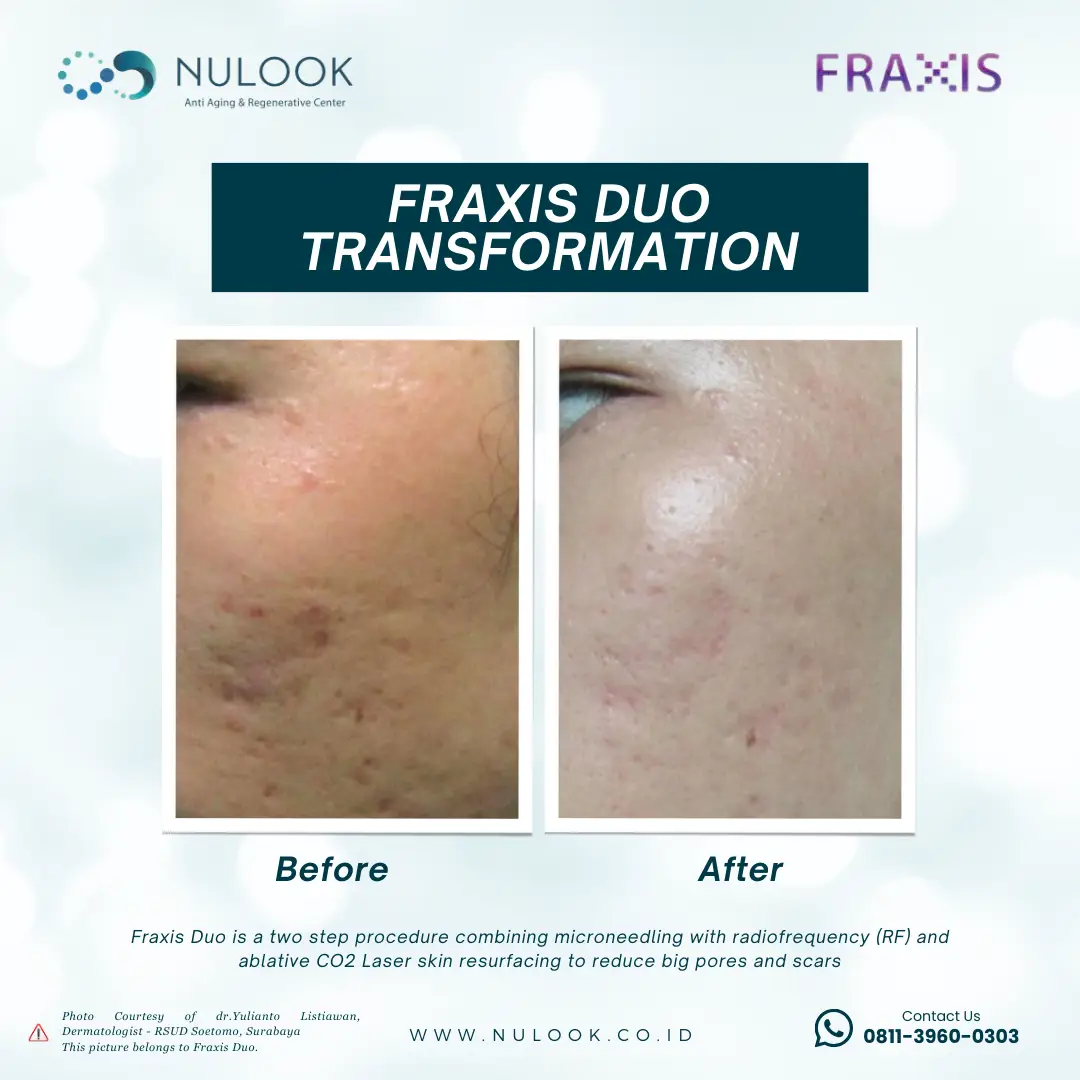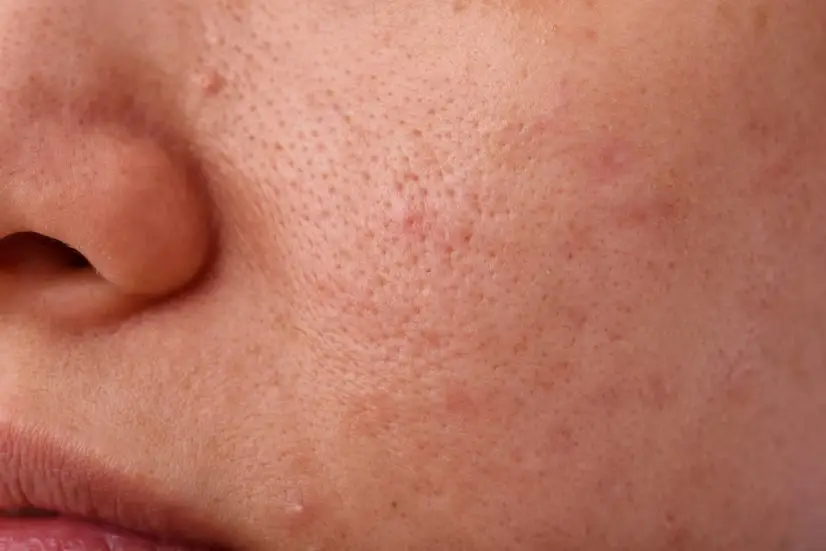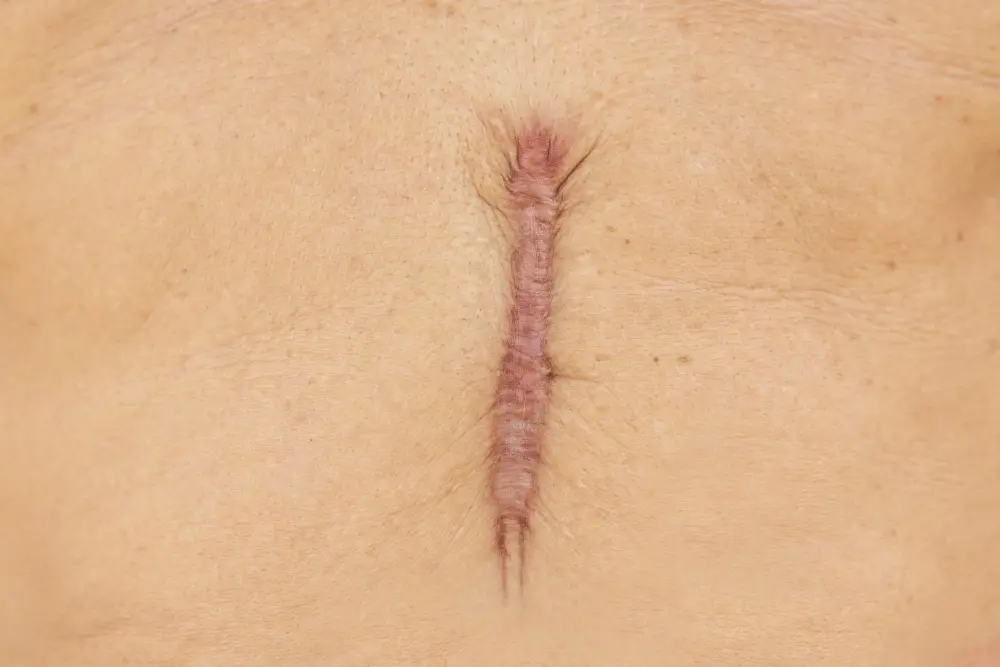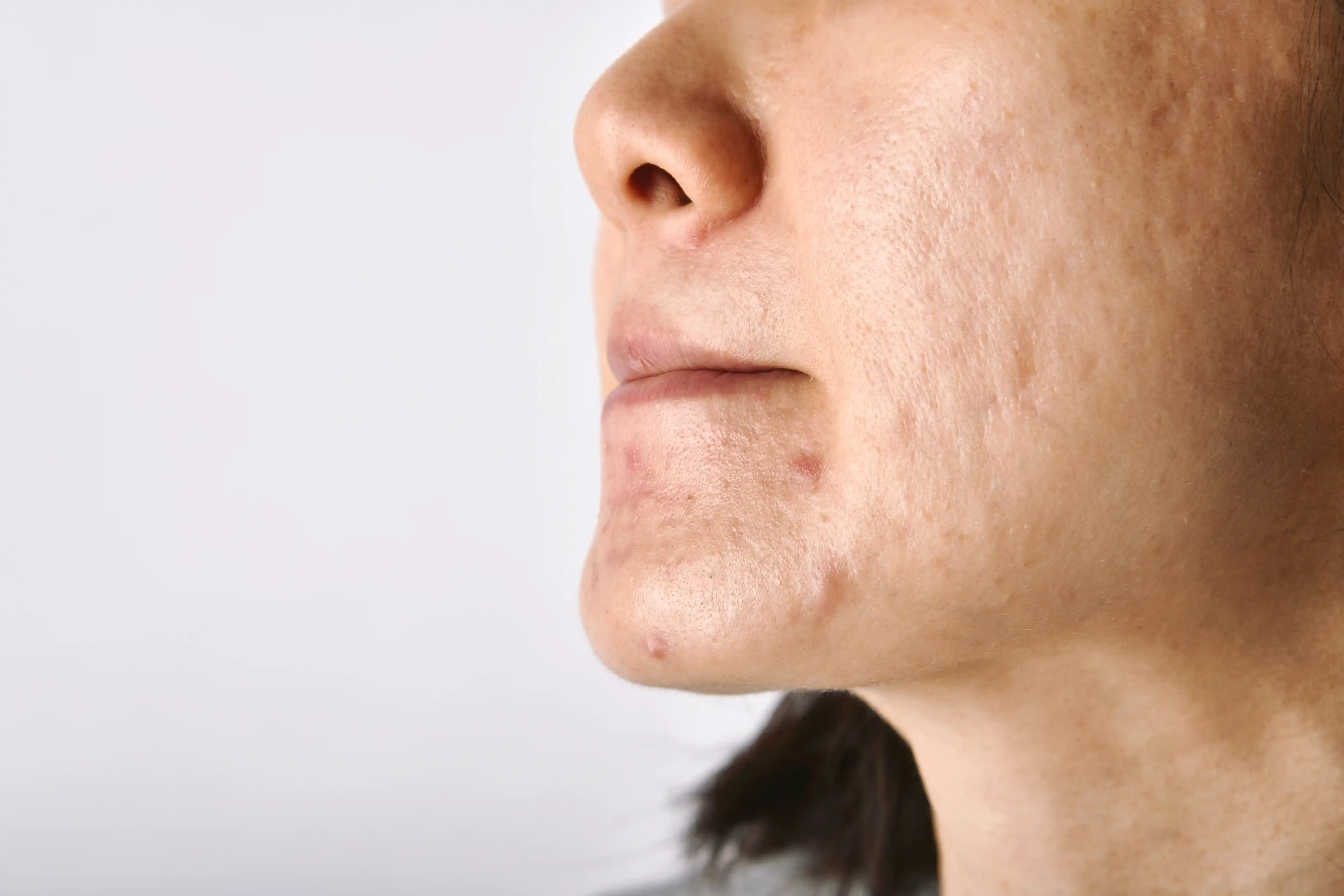Acne Scar Treatment Bali
Penulis: Administrator28/03/2024Fraxis Duo: Solusi Ganda untuk Kecantikan Kulit Impian Kamu
Di era modern ini, kecantikan kulit menjadi dambaan banyak orang. Tanda-tanda penuaan seperti kerutan, garis halus, dan kulit kendur tak jarang menjadi sumber kekhawatiran. Untuk mengatasinya, berbagai pilihan perawatan kulit terus bermunculan, menawarkan solusi inovatif dan efektif.
Salah satu teknologi yang menarik perhatian adalah Fraxis Duo, sebuah alat canggih yang menggabungkan dua teknologi laser dan RF mikro-jarum untuk memberikan solusi ganda bagi berbagai permasalahan kulit.
Manfaat Fraxis Duo yang Memukau
Fraxis Duo bukan sembarang alat kecantikan. Teknologi ini menawarkan berbagai manfaat yang luar biasa, antara lain:
1. Mengurangi Kerutan dan Garis Halus
Fraxis Duo efektif dalam mengatasi tanda-tanda penuaan seperti kerutan dan garis halus yang sering muncul di dahi, area mata, dan sekitar bibir. Teknologi ini bekerja dengan cara merangsang produksi kolagen baru di lapisan kulit, sehingga kulit menjadi lebih halus, kenyal, dan tampak awet muda. Dengan perawatan rutin, kamu bisa merasakan perubahan signifikan pada tekstur kulit.
2. Memudarkan Bekas Jerawat dan Bekas Luka
Bekas jerawat dan bekas luka sering kali menjadi masalah yang sulit diatasi. Fraxis Duo hadir sebagai solusi efektif untuk memudarkan noda tersebut. Teknologi fractional CO2 laser dan microneedle RF membantu mempercepat regenerasi sel kulit baru, sehingga bekas jerawat dan bekas luka memudar, meninggalkan kulit yang lebih rata dan mulus.
3. Meningkatkan Tekstur dan Elastisitas Kulit
Kulit yang kencang dan elastis adalah dambaan setiap orang. Fraxis Duo membantu meningkatkan tekstur kulit dengan merangsang pembentukan kolagen dan elastin di lapisan kulit dalam. Hasilnya, kulitmu tampak lebih kenyal, halus, dan bercahaya alami.
4. Menghilangkan Noda Hitam dan Hiperpigmentasi
Hiperpigmentasi dan noda hitam sering kali mengganggu kepercayaan diri. Fraxis Duo dapat membantu mengatasi masalah ini dengan meratakan warna kulit dan menghilangkan noda hitam secara bertahap. Kulit pun tampak lebih cerah, bersih, dan merata.
5. Mengecilkan Pori-Pori
Pori-pori besar sering menjadi penyebab kulit terlihat kasar dan tidak rata. Dengan Fraxis Duo, perawatan kulit kamu akan makin maksimal karena teknologi ini efektif dalam mengecilkan pori-pori, membuat kulit tampak lebih halus, bersih, dan bebas kilap.
6. Mengencangkan Kulit Wajah dan Leher
Kulit yang kendur pada wajah dan leher bisa menjadi tanda penuaan yang sulit diatasi. Fraxis Duo membantu mengencangkan kulit di area tersebut dengan merangsang pembentukan jaringan kolagen baru. Hasilnya, kulit tampak lebih kencang, segar, dan muda.
Cara Kerja Fraxis Duo yang Unik
Fraxis Duo bekerja dengan cara menggabungkan dua teknologi canggih:
1. Fractional CO2 Laser
Teknologi ini menggunakan sinar laser yang menembus hingga lapisan dermis kulit. Laser ini menciptakan mikro-kolom luka yang memicu produksi kolagen dan elastin baru. Proses ini mempercepat regenerasi kulit, sehingga kulit yang rusak digantikan dengan lapisan kulit baru yang lebih sehat dan muda.
2. Microneedle RF
Microneedle RF melibatkan jarum-jarum halus yang menembus ke lapisan kulit dan menghantarkan energi radiofrekuensi (RF) langsung ke dermis. Energi RF ini membantu memanaskan jaringan kulit, sehingga merangsang produksi kolagen dan elastin baru. Hasilnya, kulit menjadi lebih kencang, tekstur kulit membaik, dan kontur wajah tampak lebih terdefinisi.
Efek Samping Fraxis Duo yang Perlu Diperhatikan
Seperti halnya perawatan medis lainnya, Fraxis Duo juga memiliki beberapa efek samping yang perlu kamu ketahui. Namun, efek samping ini umumnya bersifat ringan dan sementara. Berikut beberapa efek samping yang mungkin terjadi:
1. Kemerahan
Setelah perawatan, kulit di area yang dirawat mungkin terasa kemerahan dan sedikit bengkak. Ini adalah reaksi normal dan biasanya mereda dalam beberapa hari.
2. Gatal
Beberapa orang mungkin merasakan gatal ringan di area yang dirawat. Gatal ini biasanya terjadi karena proses penyembuhan kulit dan akan hilang dengan sendirinya.
3. Nyeri Ringan
Rasa nyeri ringan atau sensasi berdenyut mungkin dirasakan selama prosedur atau setelahnya. Namun, ini hanya berlangsung sementara dan dapat diatasi dengan kompres dingin atau obat yang direkomendasikan oleh dokter.
4. Perubahan Pigmentasi
Dalam beberapa kasus, mungkin terjadi perubahan pigmentasi kulit, seperti hiperpigmentasi (kulit menjadi lebih gelap) atau hipopigmentasi (kulit menjadi lebih terang). Risiko ini dapat diminimalkan dengan mengikuti instruksi dokter dan menghindari paparan sinar matahari langsung.
5. Pengelupasan Kulit
Kulit di area yang dirawat mungkin mengalami pengelupasan ringan sebagai bagian dari proses regenerasi kulit. Pengelupasan ini biasanya terjadi dalam beberapa hari setelah perawatan.
Penting untuk diingat bahwa efek samping ini umumnya ringan dan bersifat sementara. Konsultasikan dengan dokter kulit untuk mengetahui apakah Fraxis Duo cocok untuk kamu.
Lakukan Perawatan Fraxis Duo di Nulook
Jika kamu mencari tempat terpercaya untuk melakukan treatment Fraxis Duo, Nulook merupakan tempat yang tepat. Dengan tenaga profesional berpengalaman dan teknologi terkini, Nulook siap membantu kamu mendapatkan kulit yang lebih sehat, cerah, dan bercahaya.
Disclaimer
Hasil perawatan dapat bervariasi pada setiap individu, tergantung pada kondisi kulit, riwayat kesehatan, gaya hidup, serta berbagai faktor lainnya. Seluruh foto “sebelum & sesudah” (before-after) yang ditampilkan merupakan contoh ilustrasi dan tidak menjamin hasil yang sama bagi setiap pasien. Informasi yang tercantum di website ini bertujuan sebagai edukasi umum dan bukan pengganti konsultasi medis profesional. Silakan lakukan konsultasi langsung dengan dokter atau tenaga medis berlisensi di klinik kami.
Kunjungi klinik Nulook atau hubungi kami untuk konsultasi dan menjadwalkan perawatan kamu sekarang juga!



Sebelum & Sesudah
Baik untuk kombinasi
Perawatan
Perawatan

